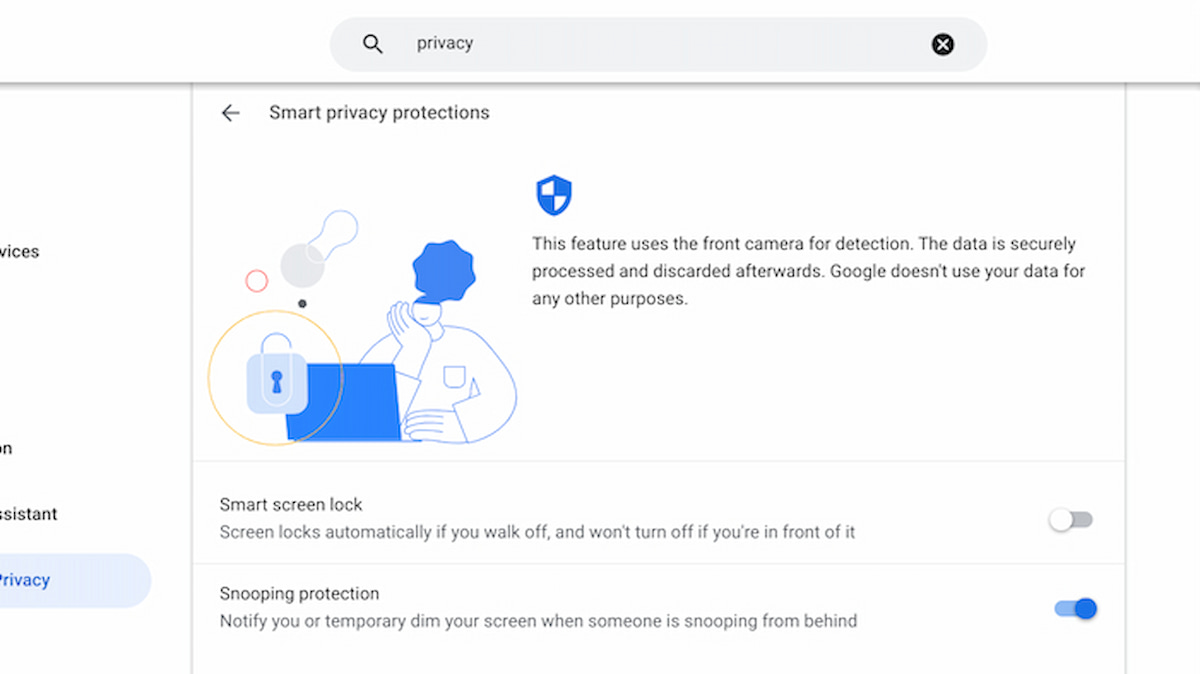Back in December, I called attention to a new Chromebook privacy effort that detects when someone behind you is snooping on your laptop. The feature is still in the works so don’t go looking for it just yet. However, I do see a new internal ChromeOS URL that displays a diagnostic tool to test this Chromebook privacy feature.
You should be able to view it by pointing your browser to chrome://hps-internals/, where you should see the below image.
In its current state, I can’t get it working just yet on the Chrome OS 105 Dev Channel. However, you can see that looks like a method to test what Google calls the HPS, which I believe stands for Human Privacy Sensor.

Based on the internal web page, you’ll be able to test this Chromebook privacy feature, which uses your laptop camera for input.
Google created machine learning models to detect when someone might be snooping over your shoulder during Chromebook use. I expect that the “inference score” in the above image is a comparison score against those data models. These would signify the likelihood of a “snooper” compared, to say, someone just glancing or passing by.
Back in December, the feature was designed to dim your Chromebook display. Given the diagnostic tool, it’s possible that you’ll also be notified in this situation.

There are also recent code changes related to the HPS that I found.
One captures time data for the locked and unlocked state of a Chromebook. Perhaps there will be some additional Chromebook privacy features in tandem with the snooping protection based on screen lock state or duration.
Another reduces the response time to detect snooping by using a shared learning model:
This model gives us both presence and second person detection results – effectively doubling our throughput when both features are enabled. Due to larger tiling used by this model, it also reduces total loop time from about 318ms to 307ms.
Again, this Chromebook privacy feature hasn’t yet rolled out. So even if you’re running the latest ChromeOS Dev Channel version of software, you can’t turn it on.
However, it’s interesting to see how these features take shape. And eventually, you may have fun (for a few minutes or so!) testing it out yourself with the HSP internals tool.


3 Comments
Does this new feature infer that the camera would be “on” continuously?
Yes it does.
That’s the only way someone behind you can be sensed by the machine.
So I guess that would mean kissing goodbye to using that manual privacy shutter…
Looks like a trade-off of one privacy risk against another.
The sensors probably being used don’t require camera. Audio and brightness detection sensor. The brightness/dimming sensor doesnt need the camera. How might i know this? i yanked out my camera, screen would still auto dim quite well. Some devices obviously might use different methods, sensors, techniques overall but given my two test devices didn’t need camera in order to ‘sense’ anything in front of it…It isn’t even a stretch to imagine millions of samples of data that show an outline of where the user is based entirely off how much shadow is cast over the sensor. No camera needed… Unless of course you screen record or do videos of yourself.. video chat etc. Then anything goes since you’ve already agreed to anything by using the service